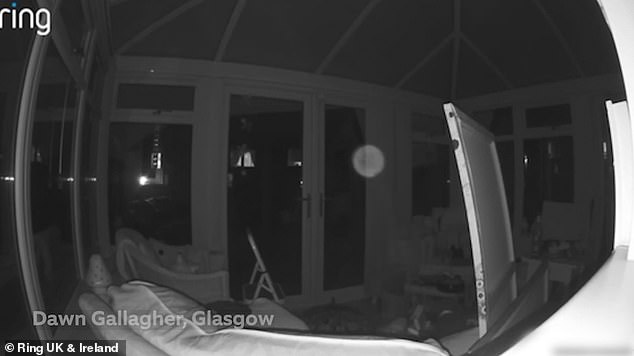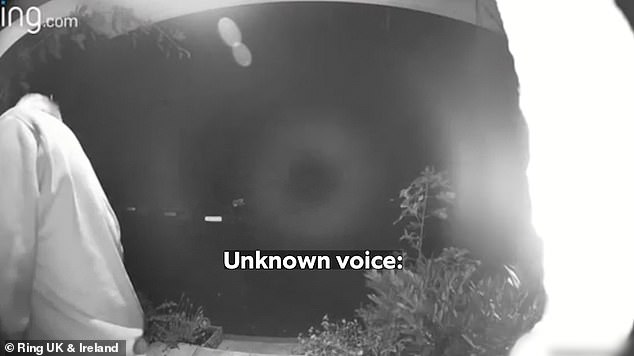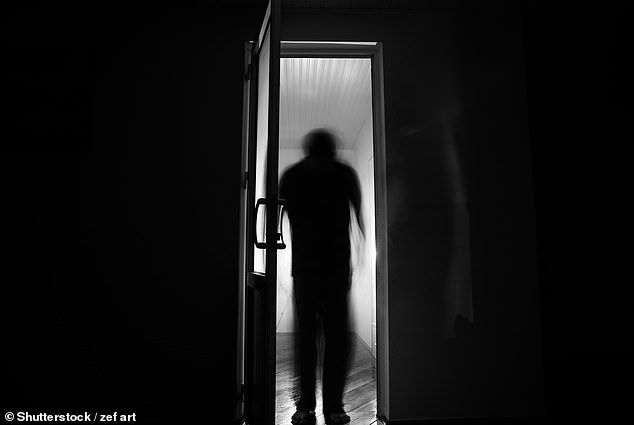Chances are, you know someone who claims to have had an encounter with a ghost. Maybe you even have a story of your own.
More than six in 10 adults believe in ghosts, even though no one has been able to definitively prove that ghosts really exist.
So why do these ineffable experiences seem so real, when science tells us they can’t be?
The answer lies in a combination of psychological and social factors that have reinforced the idea that ghosts are real even in the absence of solid evidence, experts told DailyMail.com.
More than 60 percent of American adults believe in ghosts, even though there is no scientific evidence to suggest that the spirits of the dead can walk among us.
Some aspects of human psychology have played an important role in shaping a widespread belief in ghosts.
When people experience something unknown and inexplicable, it triggers a “primitive motivation” to seek an explanation, Barry Markovsky, professor emeritus of sociology at the University of South Carolina, told DailyMail.com.
The brain uses two systems to find that explanation: rational cognition and emotional response, he explained.
‘The first thing we can experience when encountering a strange and unknown event is that emotional reaction.
“And unfortunately, the evidence seems to show that emotional responses tend to dull cognitive analysis,” he said.
Fear is an emotion that has a particularly powerful effect on rational thinking. It’s an “incredibly powerful persuader and motivator,” Brian Cronk, a psychology professor at Buffalo State University, told DailyMail.com.
Additionally, the brain tends to draw conclusions based on the first information that comes to mind, Cronk said.
This is called availability heuristic. “It’s a shortcut the brain uses to find answers when it doesn’t have time to do a real analysis,” he explained.
The fact that our media is flooded with stories of ghosts, hauntings and possessions means that our minds are too.

Much of the “evidence” of ghosts, such as videos of floating orbs or recordings of disembodied voices, actually have completely normal explanations, Kenny Biddle told DailyMail.com.
So when something happens in the night, we can remember those stories and think that something similar must be happening. So fear could hinder our ability to find a more rational explanation.
These aspects of the brain may explain why “paranormal encounters” seem so real to people who claim to have experienced them.
And when they share the story of the incident with others, their beliefs can become even more ingrained, Markovsky said.
These stories have a “cool factor” that makes them intriguing and exciting, he explained. They capture people’s attention and, in this way, can become almost a social currency.
This may prompt a person to continue with their story even if there is no evidence to suggest it really was a paranormal experience, just so they can keep telling it.
Others may subconsciously want to believe in ghosts because it makes them feel connected to their deceased loved ones or eases their anxiety about what happens after we die, Markovsky said.
“We’re tempted to adopt those kinds of beliefs primarily for emotional reasons,” he said. “There’s something very deep and satisfying about this that eludes rationality.”

If you are looking for paranormal explanations for some strange event, Biddle’s advice is to always “be skeptical.”
Additionally, there is a lot of false ghost “proof” that can strengthen people’s beliefs.
But this evidence, such as videos of floating orbs or recordings of disembodied voices, almost always has a completely normal explanation, Kenny Biddle told DailyMail.com.
Biddle is the chief investigator of the Committee for Skeptical Inquiry, a think tank that aims to promote the use of reason in the investigation of paranormal claims.
“My job is to go in and look for a cause,” he said.
He has spent more than two decades investigating and debunking people’s ghost stories. But when he started, when he was 20, he was a believer, he said.
As a young ghost hunter, he used cameras, audio recorders, cassette tapes, and electromagnetic field (EMF) readers to try to find evidence of ghosts.
But the problem with using these devices is: “if you don’t put experimental controls around their use, then you’re not doing science.” “You are doing pseudoscience,” he said.
Let’s take an EMF reader as an example. This device detects electromagnetic fields that humans cannot see, hear or feel.
So when the reader sounds an alert, There’s no way to confirm whether it was caused by a ghost or something entirely benign. For example, EMF readers can be activated by radio waves or electrical equipment that is turned on and off, Biddle explained.
Cameras can be deceiving, too. People often attribute floating orbs captured in photographs or videos to ghosts, but they are actually just dust, pollen, insects, or liquid droplets in the air that catch light, especially when the flash is used.
The Panasonic DR60 is another device commonly used by ghost hunters to record disembodied voices, moans, or whispers.
This recorder is considered the “Holy Grail” of ghost hunting equipment, but it has “serious flaws,” Biddle said.
The DR60 is very sensitive and is designed to start recording when it hears a sound. Even the researcher’s own breathing can cause them to start recording, he said.
It also generates sounds internally due to failures and malfunctions, Biddle explained. In most cases, the noises that these recorders capture do not come from external sources, but from the recorder itself.
This is where confirmation bias comes into play. When ghost hunters actively look for evidence of a specter, they may interpret completely meaningless recordings as words, grunts or moans, he said.
Whatever the reason behind the belief, once it is formed, it is difficult to let go, Cronk said. This is called belief perseverance, or the idea that our beliefs persevere even in the face of skepticism and scrutiny.
Therefore, it is unlikely that people will stop believing in ghosts anytime soon. But if you’re looking for paranormal explanations for some strange event, Biddle’s advice is to “always be skeptical.”
Ghost stories have been around for thousands of years and date back to ancient civilizations.
Once the scientific method was developed in the early 17th century, people finally had a way to investigate paranormal claims.


